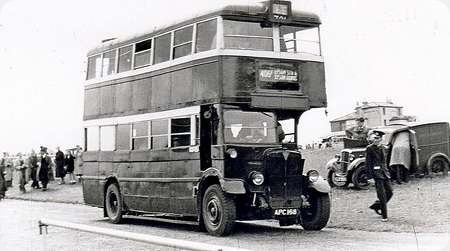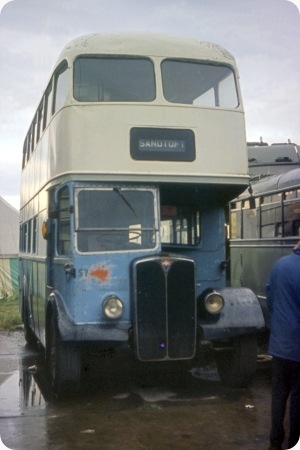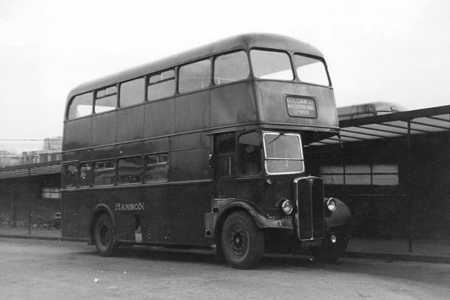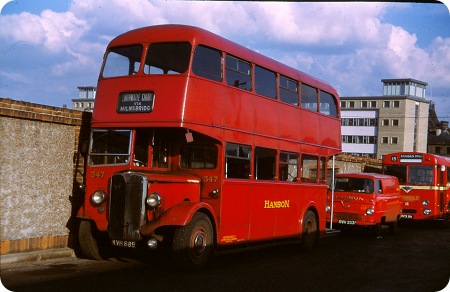London Transport - AEC Regent Bluebird ST - APC 168 - ST1037
Photo: Copyright unknown
LGOC/LGCS/LCBS
1932
AEC Regent
LGOC H26/22R
The Bluebird six-wheel LT was an impressive and attractive variant of the LT class, but the Bluebird ST
was rare. ST1037 was one of the first 8 of a total of just 23 Bluebird STs which London General built
for their expanding green Country Services. Initially allocated to Windsor Garage by LGOC, under London
Transport, it quickly moved to North London , serving at Tring until mid 1948, when it was transferred
to Reigate for storage, then quickly re-allocated to Watford High Street Garage as a trainer.
Never having had an overhaul, looking very careworn, with deformed lower panels and body sag
extending from bottom to the underside of upstairs windows, she is shown at Epsom Downs on route 406F on
the shuttle service from Epsom Station to Epsom Downs during one of the Epsom Racecourse events, most
likely around Derby Day, when any bus capable of moving was dragged out of dusty corners over to Morden
and other places to operate shuttle services., Post-war, this attraction was often the death knell for
some of these loyal, decrepit, worn-out servants, the stigma of imminent doom appearing as a
crudely-chalked cross on the nearside wing! In December 1949, the axe fell and she was sold to Daniels
of Rainham for scrapping and an undeserved end after over 17 neglected years of service. Not bad for a
vehicle with a design life of about 10 years!
A couple of asides:
Note the Morris 8 maintenance van on the right
Route 406F used
the highest suffix letter ever by London Transport.
Some history of this vehicle taken from the
excellent Ian’s Bus Stop website.
Photograph and Copy contributed by Chris Hebbron
18/04/20 - 05:48
Route 406F still operates on major race days, using the same route number and must be the last survivor of the Bassom route numbering scheme.
David Todd
19/04/20 - 06:05
Thx for that, David. Amazing the way some things survive in the most obscure and unique ways. It would not be surprising if the suffixes A to E disappeared years ago!
Chris Hebbron
20/01/21 - 06:53
Your text is slightly incorrect, Chris. These buses were delivered in the red livery of London General Country Services. Apparently the green country bus livery was first introduced in May 1933 prior to LT becoming operational. I presume the green livery as introduced in May 1933 was all over mid green with black relief and plain General fleetnames, that being the initial LT Country Bus livery. Apple green relief around windows was added later and in 1935 a new version with less black and possibly a different shade of the darker green along with London Transport fleetnames became standard. You can find pictures with LT fleetnames on the earlier green livery as well, the fleetname having been introduced in 1934.
PS: Surely the text should read "Never having had a post-War overhaul"?
Andrew Colebourne
31/05/21 - 05:02
Thx for posting the early history of these vehicles, Andrew.
As for
overhauls, Ian’s Bus Stop makes no mention of pre-war overhauls, although there is mention of three
of them having CHASSIS overhauls at Chiswick in 1948. It did nothing to prolong their lives,
however, as all of the remaining ones went during 1949 anyway. It’s unlikely that they had postwar
ones, for those LT and LTL’S which did have post-war body rebuilds, by outside contractors, lost
their waistline cummerbunds, which this one still retains.
Chris Hebbron
Quick links to the - Comments Page - Contact Page - Home Page




